The Normal Distribution
Here is the Standard Normal Distribution Density Curve is also known as the Bell Curve.
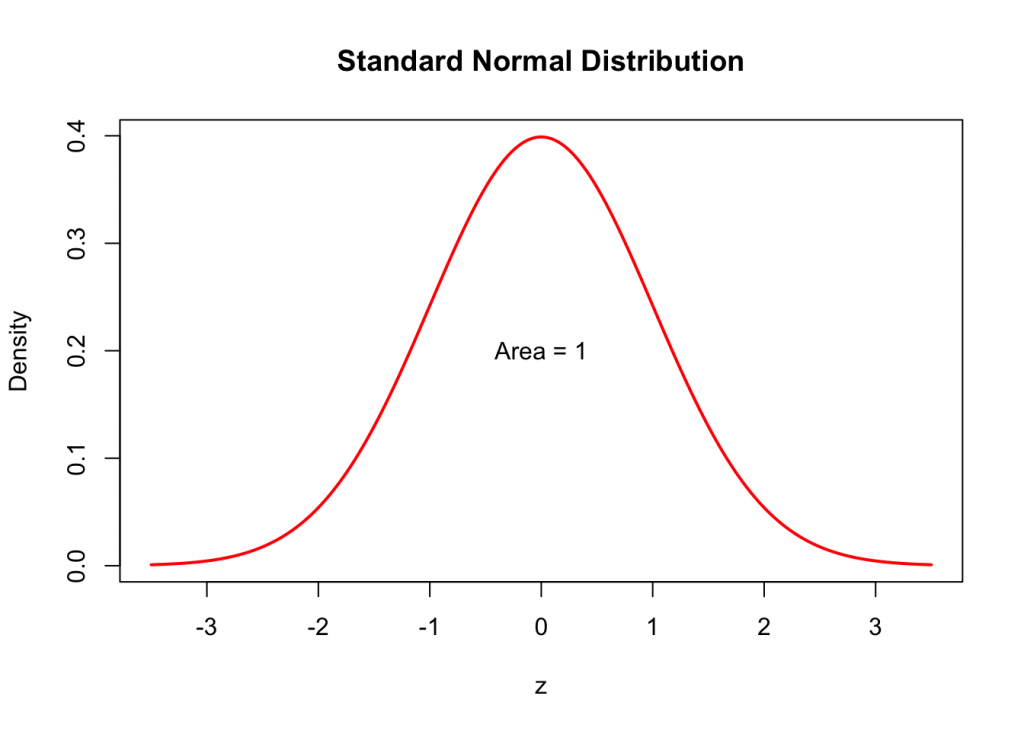
How do we find the area under the Standard Normal Density Curve?
Example 1
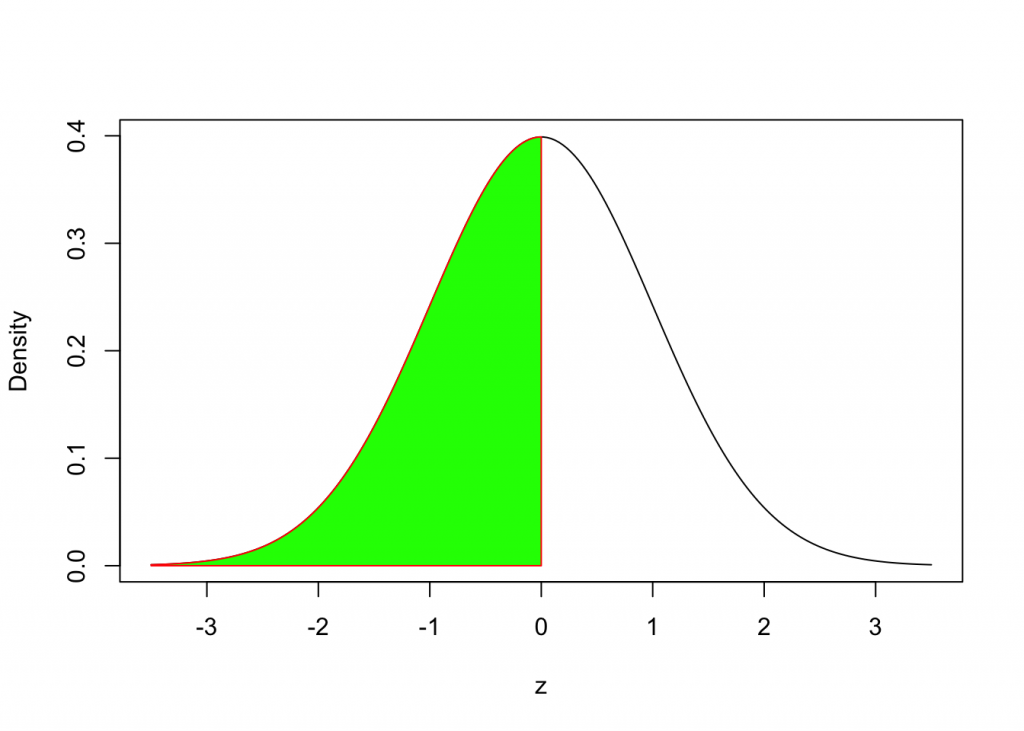
We will use the following syntax:
pnorm(0,mean=0,sd=1)## [1] 0.5Example 2
How do we find the area under the Standard Normal Density Curve to the left of z = 1.25?
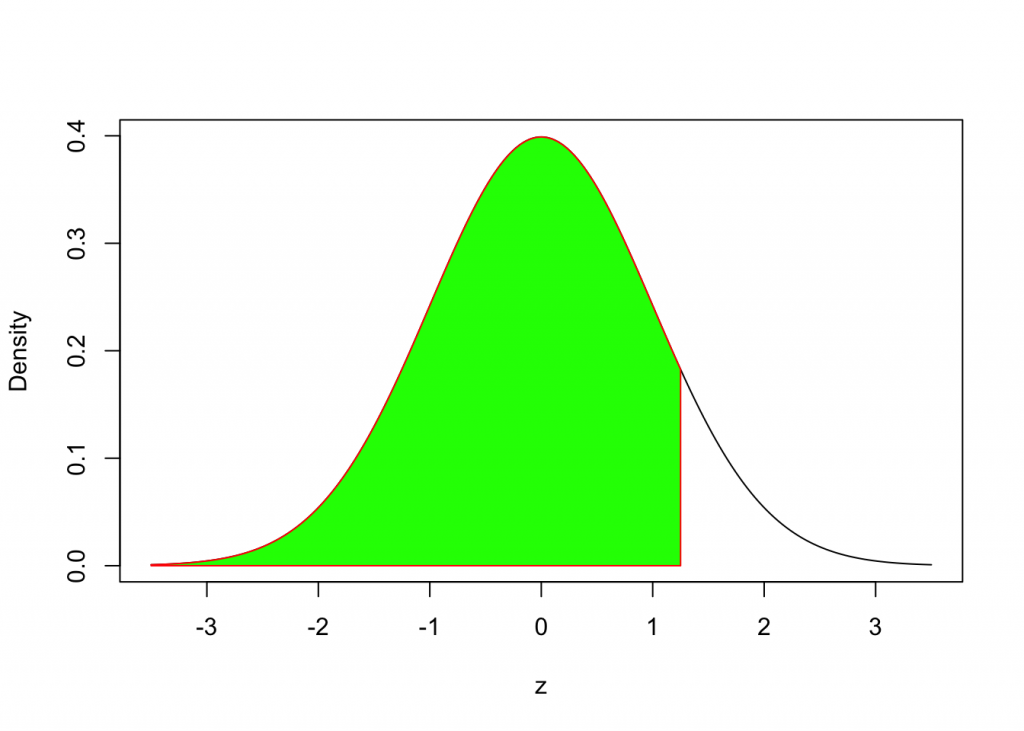
pnorm(1.25, mean=0,sd=1)## [1] 0.8943502Example 3
How do we find the area under the Standard Normal Density Curve to the right of z = 1.5?
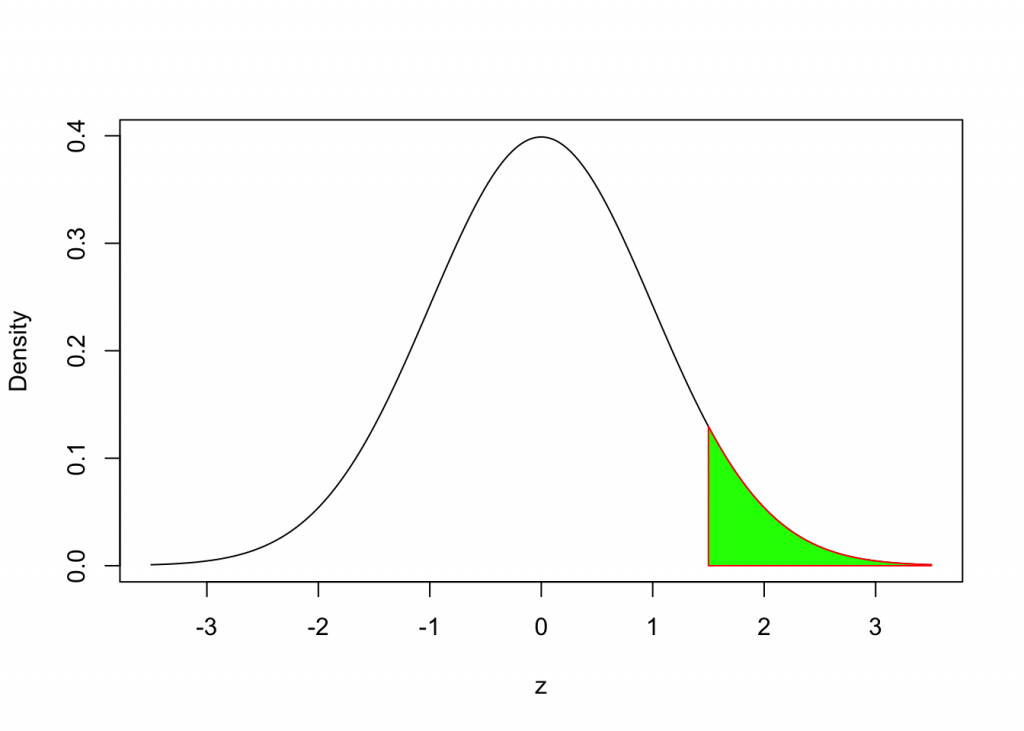
We can use the following syntax:
1 - pnorm(1.5, mean=0, sd=1)## [1] 0.0668072Alternatively the code below
pnorm(1.5, mean=0, sd = 1, lower.tail = FALSE)## [1] 0.0668072Example 4
How do we determine the area under the Standard Normal Curve between two z-values, (eg. z = -1.25 and z = 1.25)?
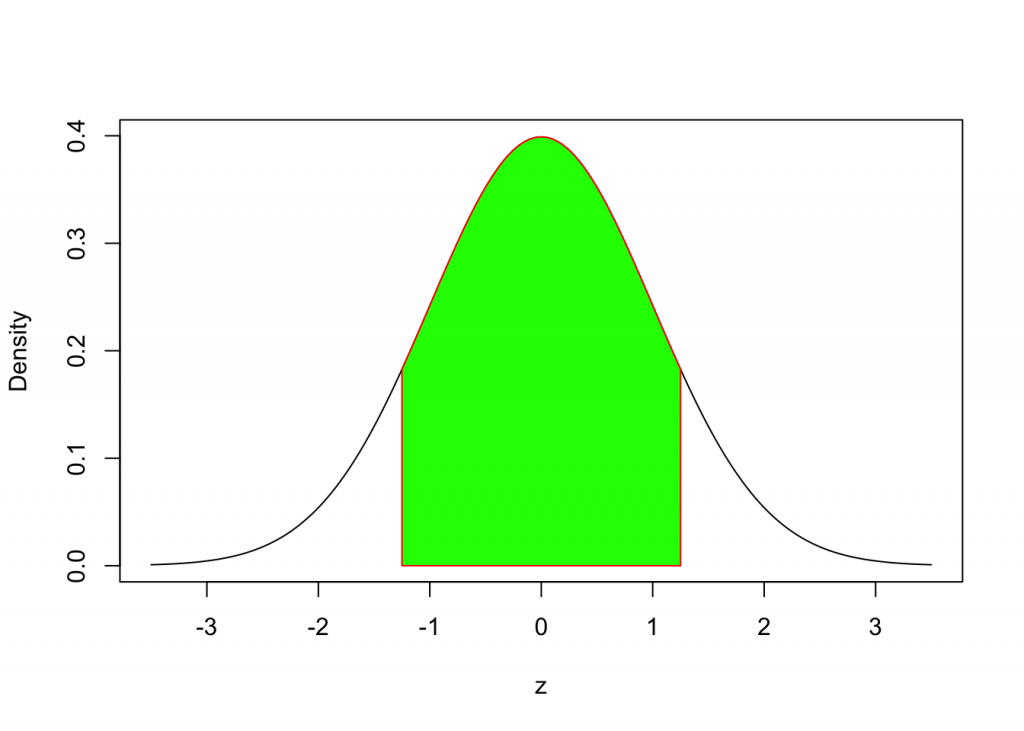
We can calculate the difference of two areas as follows:
pnorm(1.25, mean = 0, sd = 1) - pnorm(-1.25, mean = 0, sd = 1)## [1] 0.7887005Summary:
The following code pnorm(z, mean, sd) provides the area under the Standard Normal Density Curve to the left of z-value.
Assignment 2
The bone density test scores follow standard normal distribution for children, healthy premenopausal young women, and men under 50. Assume that a randomly selected person is subjected to a bone density test. Find the probability that this person has a score:
- z < -2.5
- -2.5 < z < -1
- z > -1.
Note: For each part: a, b and c include distribution statement, density curve with shaded area. Also, use a full and complete sentence as the answer to a, b, and c part.
link
I am sure this piece of writing has touched all
the internet visitors, its really really fastidious paragraph on building uup new weblog.